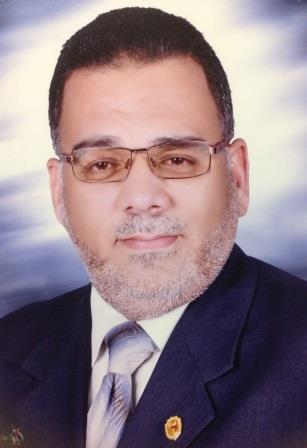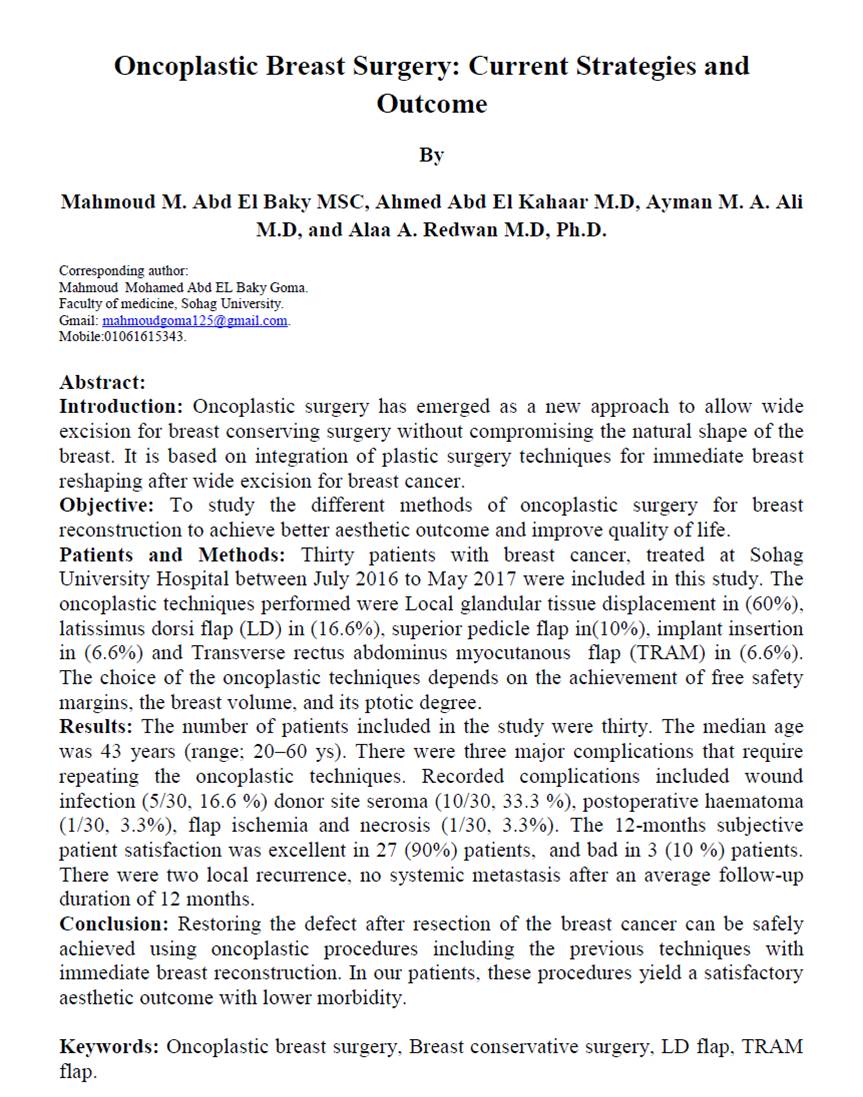Abstract:
Introduction: Oncoplastic surgery has emerged as a new approach to allow wide excision for breast conserving surgery without compromising the natural shape of the breast. It is based on integration of plastic surgery techniques for immediate breast reshaping after wide excision for breast cancer.
Objective: To study the different methods of oncoplastic surgery for breast reconstruction to achieve better aesthetic outcome and improve quality of life.
Patients and Methods: Thirty patients with breast cancer, treated at Sohag University Hospital between July 2016 to May 2017 were included in this study. The oncoplastic techniques performed were Local glandular tissue displacement in (60%), latissimus dorsi flap (LD) in (16.6%), superior pedicle flap in(10%), implant insertion in (6.6%) and Transverse rectus abdominus myocutanous flap (TRAM) in (6.6%). The choice of the oncoplastic techniques depends on the achievement of free safety margins, the breast volume, and its ptotic degree.
Results: The number of patients included in the study were thirty. The median age was 43 years (range; 20–60 ys). There were three major complications that require repeating the oncoplastic techniques. Recorded complications included wound infection (5/30, 16.6 %) donor site seroma (10/30, 33.3 %), postoperative haematoma (1/30, 3.3%), flap ischemia and necrosis (1/30, 3.3%). The 12-months subjective patient satisfaction was excellent in 27 (90%) patients, and bad in 3 (10 %) patients. There were two local recurrence, no systemic metastasis after an average follow-up duration of 12 months.
Conclusion: Restoring the defect after resection of the breast cancer can be safely achieved using oncoplastic procedures including the previous techniques with immediate breast reconstruction. In our patients, these procedures yield a satisfactory aesthetic outcome with lower morbidity.


